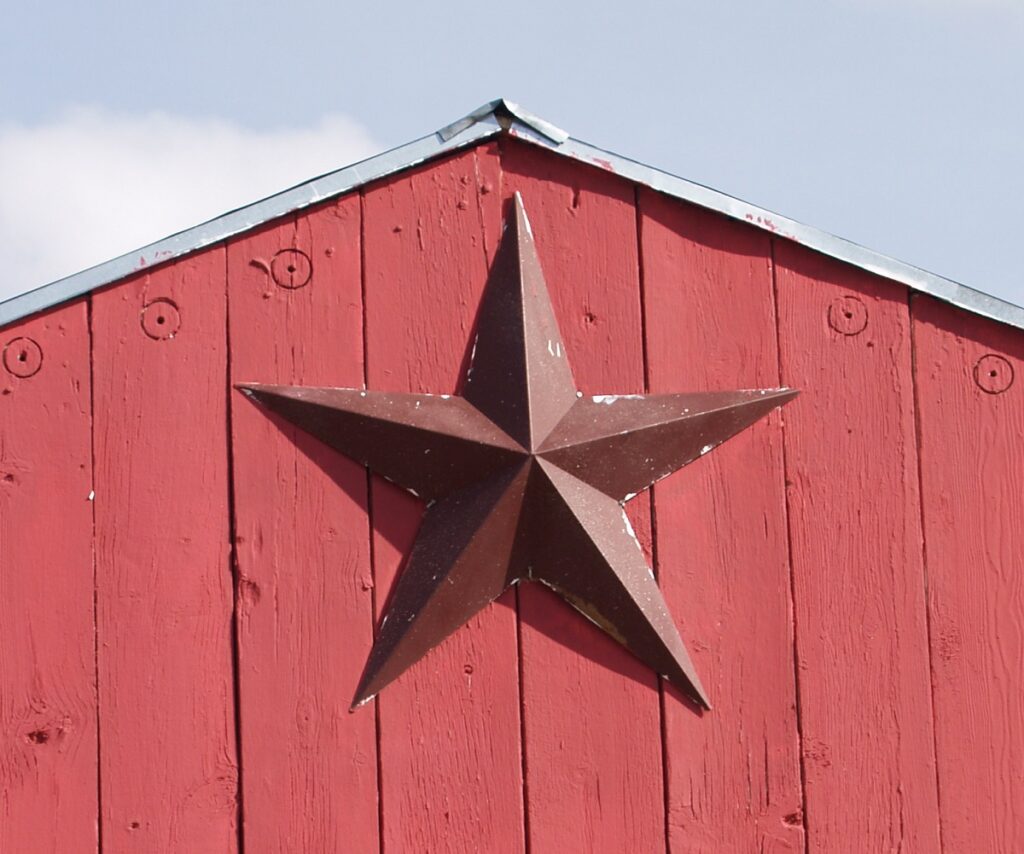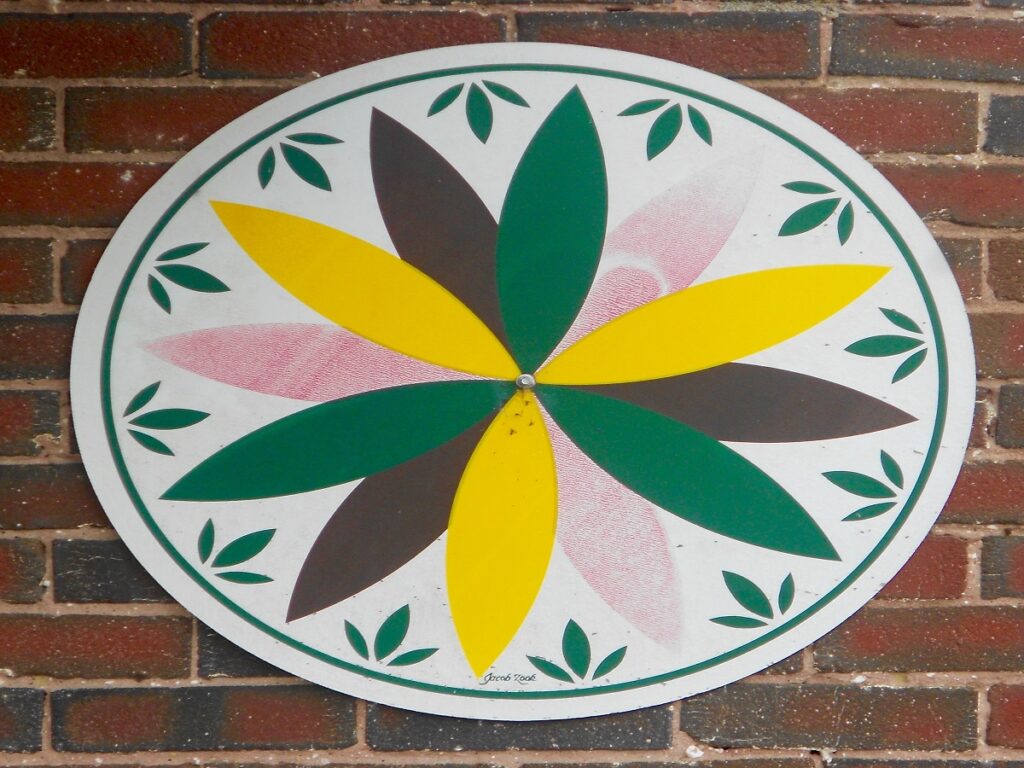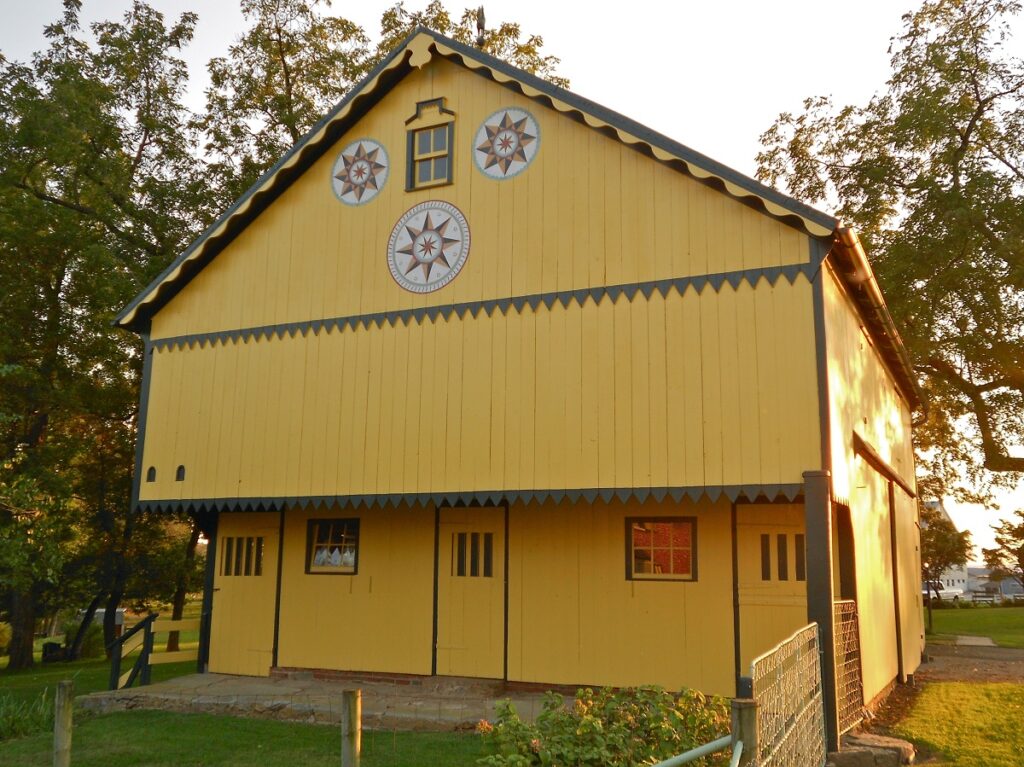Barns have been an iconic part of rural landscapes for centuries, often standing as symbols of hard work and agricultural heritage. While their red walls and slanted roofs are widely recognized, many barns feature a more mysterious detail: stars painted or mounted on their exteriors. These barn stars, sometimes called “hex signs,” have inspired curiosity among farmers, historians, and travelers alike. From decoration to symbolism, these stars carry meanings rooted in both practical and cultural traditions, blending beauty with history in rural America.
The Origin of Barn Stars

Barn stars first appeared in the United States in the 18th and 19th centuries, particularly in Pennsylvania. They were inspired by European settlers, including Germans and Dutch, who brought with them the custom of decorating homes and farm buildings with symbolic motifs. These stars were initially painted onto barns to express hope, protection, and prosperity for the farm and its occupants. Over time, the practice spread to other rural areas, becoming both a decorative feature and a symbol of cultural identity in farming communities across the country.
Symbolism Behind the Stars
The stars often symbolize good fortune, protection, and guidance, much like a family crest or talisman. Farmers believed that adding a star to a barn would bring blessings, safeguard livestock, and ensure a prosperous harvest. The shape and color of the star could carry different meanings, with five-pointed stars representing protection and six-pointed stars symbolizing harmony. This symbolism reflects the deep connection rural communities had with nature and the cycles of planting and harvesting that dictated their lives.
Hex Signs and Pennsylvania Dutch Influence

Many barn stars are closely related to hex signs, which are geometric or star-shaped symbols used by Pennsylvania Dutch communities. These signs often incorporated elements like rosettes, hearts, and circles alongside stars. Initially, hex signs were believed to ward off evil spirits or bad luck. Over time, they became more decorative while retaining their symbolic power. The star, a central element of many hex signs, remained a popular choice for barns, reinforcing the link between cultural heritage and practical belief in protection.
Decorative Appeal
Apart from symbolism, barn stars serve an aesthetic purpose. Farmers and builders often painted stars in bright colors such as red, blue, green, or black to contrast with the barn’s natural wooden siding. This visual appeal made the barn more distinctive and easily recognizable from a distance, especially in communities where multiple barns were visible. The artistic addition of stars allowed farmers to express pride in their property while maintaining a connection to traditional motifs that carried both beauty and meaning.
Variations in Design

Barn stars come in a variety of shapes and sizes. Some are simple five-pointed stars, while others are elaborate, multi-pointed designs mounted as metal ornaments. Shapes and patterns could vary depending on regional styles or family preferences, reflecting personal or community identity. In some cases, stars were painted directly onto the barn, while in others, they were constructed from metal and affixed to the building. This flexibility allowed farmers to choose designs that suited their aesthetic tastes and the practical needs of their farm structures.
Practical Beliefs
Historically, barn stars were not only decorative but also practical. Farmers believed stars could protect barns from lightning strikes or fires. Some thought that mounting a star above the barn door or on the gable end could divert harmful forces and ensure the safety of the livestock and stored crops. While modern science does not support these claims, the belief was widespread, demonstrating how superstition and daily life often intertwined in rural communities to create traditions that lasted for generations.
Modern Popularity
Today, barn stars have transcended their original rural context and gained popularity in urban and suburban decor. Many homeowners use star motifs on fences, walls, and gardens as decorative elements inspired by traditional barns. Their rustic charm and historical connotations make them appealing to people who appreciate farmhouse-style design. This modern adaptation shows how symbols once rooted in superstition and practicality have evolved into purely aesthetic features that continue to celebrate heritage and craftsmanship.
Materials Used

Traditional barn stars were often painted directly onto wooden surfaces, while some were crafted from metal such as tin, iron, or copper. Metal stars were especially common in areas where durability against wind, rain, and snow was necessary. Today, stars can be found in wood, metal, and even plastic, with finishes ranging from matte to glossy. These choices reflect the shift from functional symbolism to decorative preferences, while still honoring the traditional star motif that has defined barns for centuries.
Cultural Significance
Barn stars are more than mere decorations; they carry deep cultural meaning. In Pennsylvania and other farming regions, they became symbols of pride, identity, and community continuity. Many families would pass the tradition of adding stars from generation to generation, making it part of local heritage. These stars also appear in local festivals, historical tours, and art exhibits celebrating rural Americana, serving as enduring reminders of the ingenuity, beliefs, and artistry embedded in everyday farm life.
Comments